#purvottanasana
Photo
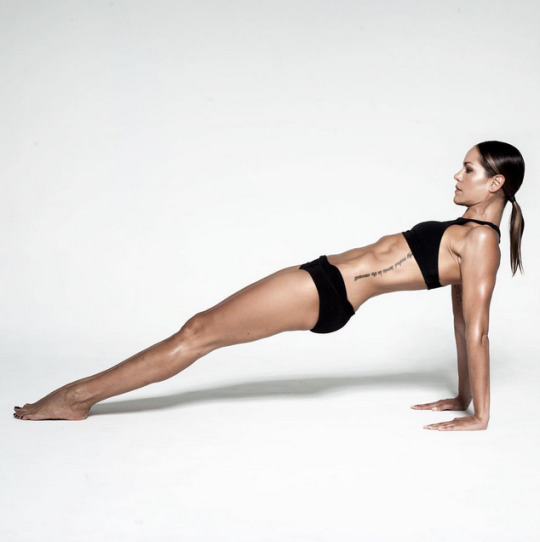
(via Five Favorites || Curated with love by yogadaily)
#purvottanasana#yoga#yogi#yogini#yogadaily#asana#asanas#yogapose#yogaposes#Law of Attraction#law of assumption#manifesting#manifest#manifestation#fitness#wellness#health & fitness
41 notes
·
View notes
Text
Reverse Upward Plank the Purvottanasana
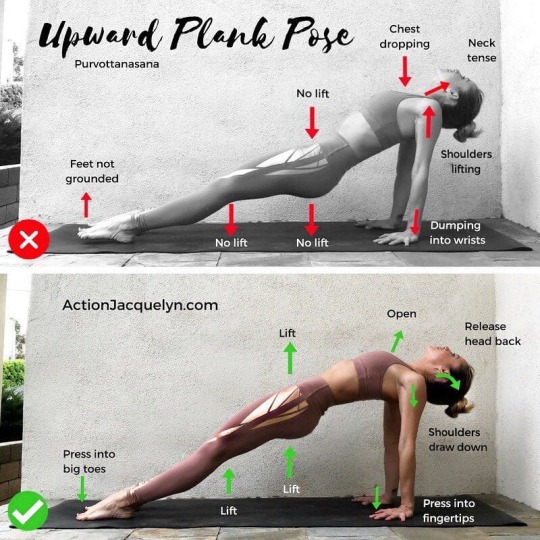
The Reverse Upward Plank or the Purvottanasana is a powerful yoga pose with several advantages. It strengthens the muscles of the arms, chest, and core, and increases flexibility of the spine. This pose is also known to stimulate the digestion system, encourage a healthy metabolism, and reduce stiffness in the shoulders and back.
Read the full article
0 notes
Text

Empower your core and open your heart with the Reverse Plank (Purvottanasana). This rejuvenating yoga pose strengthens the wrists, arms, and legs while promoting flexibility and balance. Elevate your practice and embrace the uplifting energy of this invigorating posture.
#yoga#yoga ttc in rishikesh#yoga course in rishikesh#yoga teacher training course#yoga certification in rishikesh
0 notes
Text
Natural ways to enhance your booty with yoga
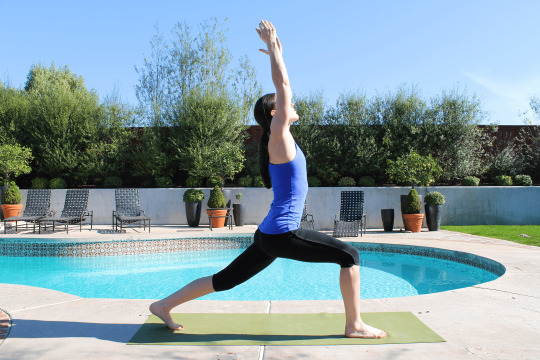
On a beneficiary note, yoga for women would be more advantageous than for men with it’s regular practice of different asanas. Yoga practice is indeed a natural way to enhance your physique without any additional supplements. Yoga and booty to considere one example. The constitution of three muscles for any butt would be
the gluteus maximus
gluteus medius
gluteus minimus.
Gluteus maximus among them is the largest muscle that’ll help in shaping the butt.
A perfect body comes with a perfect butt. To make it perfect, people often work out for hours with many exercises in the gym and outdoors. It’s okay to do but there wouldn’t be any flow in the workout as far as I know. Yoga actually challenges you with it’s refined postures toning your muscles to give you firmer buttocks. India has enough yoga studios with yoga teacher training programs throughout the year. Under a supervised trainer, you’ll be guided properly to according to your muscle and fitness complexion.
Yoga Teacher Training in India
Below are some of the yoga poses for women to enhance their butt in natural ways.
Bridge pose
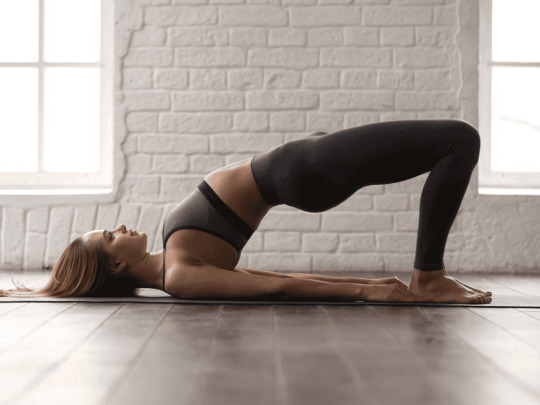
Lie down back and lift your butt from the ground by holding your ankles. Do this for at least 30 seconds daily and you’ll have significant results in no time. The bridge pose will tighten your muscles along with your booty. This is a beginner-level asana that can be practiced by anyone with care.
Natrajasana (dance pose)
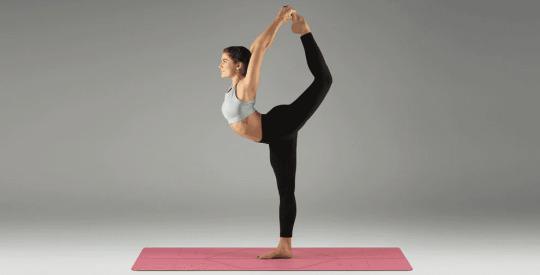
Natrajasana is a symbolical posture of the Hindu mythological god SHIVA. This posture is very sacred for people who pursue dancing. This asanam can only resemble with proper practice. Hold this pose for at least 30 seconds in the morning hours before intaking any food. Evening hours are also good to practice but your stomach must be mostly empty to start. This asana is an intermediate level of vinyasa yoga practice.
Yoga Teacher Training in Goa
Natrajasana is one of the best practices for toning your booty along with flexibility, focus, and balance. It strengthens the muscles of your hips and legs. Also helps in decreasing your weight loss, stretches your thighs, increases your metabolism, and maintains the body posture.
Chair pose

The traditional chair pose is also an efficient practice for butt workouts. Maintaining a proper alignment during this workout is a little hard but can be done by scooting your booty back enough far. It is a beginner's pose but to maintain the sensation, you must be resistant.
200 Hours Yoga Teachers Training in India
Lift your feet an inch or two from the ground and align your shoulders with the hips by stretching forward or face upwards. Lower the butt and engage your thighs. Maintain your butt and thighs slightly above the knees. Continue this pose for at least 30 seconds until you feel the burning sensation
Tiger pose
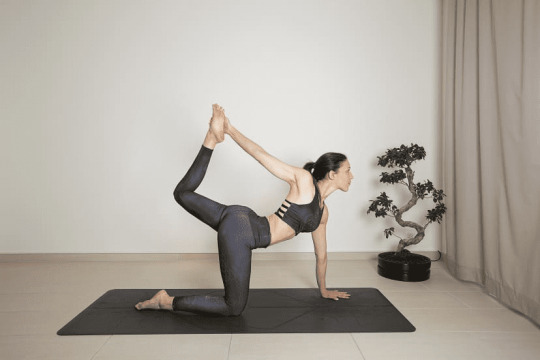
This is one of the intense poses that are practiced by mostly intermediate and advanced yoga practitioners. To observe, this posture often looks very easy but people will understand its actual potential while practicing it. This posture will strengthen your muscles and regulates the metabolism. Also helps in losing weight by burning your hips, thighs, and leg fat. This asana is also known as Salabhasana or locust pose.
200 Hours Yoga Teachers Training in Goa
Lie down and raise your leg backwards. Clutch the tip of your leg with the opposite hand bending in the same direction. Switch this pose with other arm and another leg for a better experience to maintain overall fitness. Continue this pose for at least 30 sec to a minute. This works very effectively in tuning your booty.
Purvottanasana (upward plank pose)
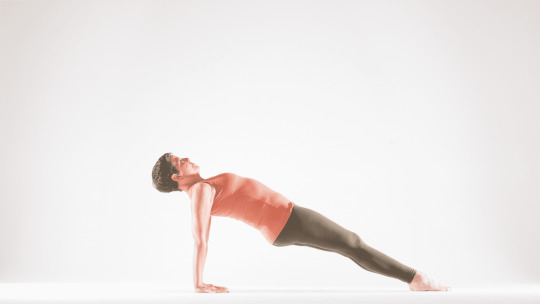
Upwards plank pose os purvottanasana is an east-faced posture where your stretch extensively with all your effort. This is a basic level vinyasa yoga asana that can be done by any beginner. Keep your stomach clean while practicing and continue for at least 30 - 60 seconds every day. In general, the plank pose helps in abs development by reducing stomach fat. But this upward plank pose is very effective to develop women’s butt.
Yoga Retreat in India
This is one of many asanas in vinyasa yoga which strengthens your entire body. It helps in stretching and flexing your arms and legs by tuning the curves of the body. Keeps you fit and energizes your stamina.
Bhujangasana (cobra pose)
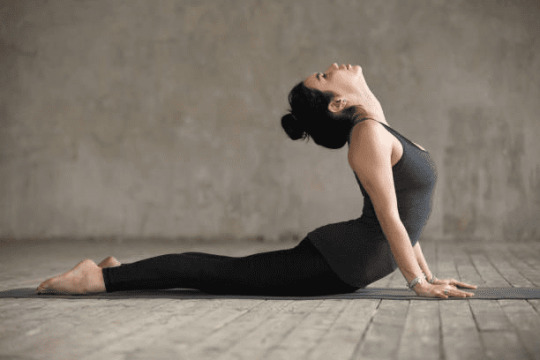
Cobra pose is for women with saggy butts. Practicing this posture for more than a minute daily will shape your butt firmly. Squeeze your butt as much as your can while extending your upper and lower body by lying down on the mat. Be in this pose for more than 2-3 minutes every day so that you can develop a good-looking butt.
Yoga Retreat in Goa
There are many other poses to enhance your booty with other natural exercises in yoga-like warrior pose, Anjaneya pose, side plank pose, Ardha chandrasana pose,
and many more. Yoga teacher training programs from yoga studios in India are highly proficient in teaching many formats and asanas. Yoga for women is not only to develop the booty and flex the body. It’s philosophically more than just physical stretching. Acknowledge the wisdom to adapt it to your lifestyle for better results.
Top institute for yoga class in goa India | Yoga course details | Online yoga teacher training course
0 notes
Text
Chaturanga Dandasana: Steps, Benefits, And More
Chaturanga Dandasana is a completely famous yoga asana. It is frequently covered in Sun Salutations and Vinyasa yoga classes. This yoga pose comes with a massive quantity of blessings for the complete body. Such as; being including strength, enhancing flexibility, and making the middle stable.
What Is Chaturanga Dandasana?
Chaturanga Dandasana is an intermediate-stage yoga pose. This is focused at improving the higher frame electricity similarly to middle stability. It is also called the four-limbed group of workers pose. Chaturanga dandasana can be completed as a standalone exercising or as a part of the Surya namaskar pose and one-of-a-kind vinyasa flows. Chaturanga Dandasana is a flow into that combines the advantages of a low plank and a push-up. And would possibly frequently be elaborate to master. It has many advantages, most crucial being which include electricity, improving flexibility, and making the center stable.
Preparatory Poses Of Chaturanga Dandasana:
Plank Pose
Bhujangasana (Cobra Pose)
Dolphin Pose
Forearm Plank Pose
Salabhasana (Locust Pose)
Sphinx Pose
Chaturanga Dandasana Steps:
Step 1:
From Plank Pose, align your shoulders slightly beforehand of your wrists and are to be had onto the balls of your feet.
Step 2:
Push once more thru your heels to engage together along with your quadriceps as you gain your sternum forward, developing a immediately. Taut line of electricity from the crown of your head thru your feet.
Step 3:
On an inhalation, firstly, draw your shoulders and the tops of your thighs up and some distance from the floor. Then Pull your decrease body up and in, and release your tailbone towards the floor.
(Also Read: Benefits Of Hatha Yoga To Improve Your Health)
Step 4:
On an exhalation, bend your elbows and slowly lower your body (maintaining it as immediately as a plank of wood) until your elbows are at spherical 90 degrees. Keep your elbows at once over your wrists and drawn in competition for your sides. Press your palms firmly to the floor.
Step 5:
Bring your gaze to the floor, about 6 inches in the front of you, and preserve to decrease until your shoulders are at the identical pinnacle as your elbows.
Step 6:
Continue to gain thru the heels, sternum, and crown of your head as you breathe.
Step 7:
To come out of the pose, exhale and reduce proper all of the manner right all the way down to your belly or preserve off as a whole lot as Plank Pose.
Follow-Up Poses Of Chaturanga Dandasana:
One can do the underneath poses because the follow-up poses of Chaturanga Dandasana:
Purvottanasana (Reverse Plank Pose)
Urdhva Mukha Svanasana (Upward-Facing Dog Pose)
Adho Mukha Svanasana (Downward-Facing Dog Pose)
Chaturanga Dandasana Benefits:
Chaturanga Dandasana has a massive series of blessings for the complete body. Since it calls for quite a few muscle hobby and strength. Below are a few blessings of Chaturanga Dandasana:
1. Easy to modify:
While this pose requires a high quality amount of strength and expertise to perform correctly, you can modify it to in form many fitness levels. Practicing Chaturanga allows you to assemble power, despite the fact that you’re now no longer capable of do the whole expression of the pose.
2. Strengthens your again and core:
Similar to plank exercises, this asana aligns your whole body and builds power to your erector spinae. The muscle companies on each aspect of your spine. So, this helps decorate center power, posture, and stability.
Mastering Chaturanga will allow you to construct realistic power. This aids you withinside the complete issue from normal sitting and moving to extra complicated movements, in conjunction with in a kickboxing class.
Practicing yoga in reputation may additionally help to relieve again pain, developing flexibility, and improving highbrow well-being.
3. Improve frame consciousness:
Improving the alignment of your body can enhance your body consciousness as you learn how to correct imbalances and uneven weight distribution.
4. Chakra work:
On a energetic level, Chaturanga Dandasana is associated with the 0.33 chakra, referred to as Manipura. Chakras are strength centers located along your spine, from its base to the crown of your head.
Located to your sun plexus, the 0.33 chakra is associated with the electricity of your self-self assurance and person identity. So, balancing this electricity middle is said to increase your self assurance, determination, and courage.
Chaturanga Dandasana Contraindications:
This yoga asana is greater tough than push-up, plank. And it additionally want an excessive amount of electricity of the top frame. So, it's miles very crucial to disregard this yoga, when you have the subsequent problems:
Persistent pain in the shoulders or shoulder injury.
Wrist pain
High blood pressure
It is also better to avoid this yoga if you are in the latter stages of pregnancy.
Conclusion:
Chaturanga Dandasana is a complicated strength-primarily based totally yoga pose. Like all yoga poses, we ought to keep our eye on the larger context wherein we are as person yoga university college students or yoga teachers at the same time as we study what desires to be done. We ought to deliver ourselves and our college students with enough time and location to allow chaturanga to make bigger through the years at a pace that is appropriate.
So, the desired cues, guidelines, and changes are all appropriate on the right time for the right student. Do the changes with the principle in notion that on every occasion you do your chaturanga posture, you are growing a musculoskeletal pattern. You’re each ingraining a pattern that is useful or harmful. In specific words, you’re always growing a pattern, so make it a awesome one in your chaturanga!
#yogapose#yogalife#yogapractice#yogateacher#yogainspiration#yogachallenge#ChaturangaDandasana#yoga benefits#yoga for health#yoga beginners
0 notes
Text
DANDASANA OR STAFF POSE: STEPS AND MORE
Dandasana is an easy asana of yoga posture. It is likewise regarded as “Staff Pose” in English. People are requested to symbolize the spinal twine in it, and it paves the manner for the power of self-awakening. Dandasana is consequently taken into consideration as a super posture to sell electricity and top form, which helps one’s non secular journey. Let us recognize in element the technique of appearing Dandasana or Staff Pose and its benefits.
What Is Dandasana or Staff Pose?
Dandasana is a Sanskrit phrase made from phrases wherein the primary phrase “Danda” means “Stick” and the second phrase “Asana” means “Yoga Pose”. Dandasana is an exercise that prepares your frame to carry out superior asanas. It additionally complements your cap potential to align your frame perfectly. This pose is the premise for all seated postures, in case you appear closely, it's far from the seated model of Tadasana or Mountain pose.
Dandasana or Staff Pose is the primary posture withinside the Ashtanga yoga collection this is completed through sitting, hence sitting in Dandasana is the idea for all different asanas. Let us understand in element a way to do Dandasana.
Preparatory Poses:
There are a few different asanas that you must exercise earlier than practicing Dandasana or Staff Pose, and those asanas also are useful in keeping fit and putting off many issues from the body.
Uttanasana Or Standing Forward Bend Pose
Adho Mukha Svanasana Or Downward Facing Dog
Dandasana Steps:
Step 1:
To carry out Dandasana, first of all, take a seat down on the yoga mat and unfold it on the floor.
Step 2:
Spread each legs in the front of your frame and maintain each of them near together.
Step 3:
Both feet bend and slide in the direction of you.
Step 4:
Push your thighs and heel into the floor.
Step 5:
Keep each of your arms directly and hands on the ground. The arms must be close to each of the hips.
Step 6:
Keep your backbone and neck directly.
Step 7:
Lift your chest up and stretch your shoulders barely to stretch your collarbones.
Step 8:
Look on the the front and preserve your breath normal.
Step 9:
Keep doing this Dandasana for 20 seconds to 1 minute. You also can do that asana in line with your ability, there may be no harm.
Step 10:
Then come again from this posture.
Follow-Up Poses:
Do those yoga poses to ease and luxury after doing those yoga poses. These yoga poses are…
Purvottanasana Or Reverse Plank Pose
Bharadvajasana Or Sage Bharadvaja’s twist
Beginner’s Tips:
This may be very useful for boys who need to have a huge and sturdy chest. The distinctiveness of this asana is that with the assistance of this asana, the advantages are seen in a quick time.
Dandasana Benefits:
There are many advantages of acting Dandasana, allow us to understand its advantages in detail
For Stretching The Shoulders:
Continuous paintings on the laptop for the duration of the day result in a sense of shoulder and chest ache. This asana creates a stretch on your shoulder which reduces this ache. Physical strain and emotional irritability in each day's existence are saved withinside the shoulder area. Which reasons shoulder ache. Dandasana is a powerful approach for correcting shoulder and chest aches resulting from each bodily and emotional strain.
Make Reed Bone Flexible:
The spinal wire is a completely critical part of our body, without it, no man or woman can take a seat down or walk. Spinal wire facilitates to provide sturdy shape to our again. Dandasana makes our backbone sturdy and flexible. This flexibility facilitates you to lessen the injury.
For Stong Strengthen Muscles:
Dandasana or Staff Pose is a superb asana to bolster our again muscle tissues and hold them healthy. By doing the paintings of bending for a long term and sitting for a long term withinside the chair, the ache withinside the again muscle tissues persists for a long term, because of which they turn out to be weak, Dandasana or Staff Pose is a superb posture to bolster them.
For Sciatica Pain:
Dandasana or Staff Pose is a great remedy to lessen aches withinside the decrease a part of the frame, along with aches withinside the legs, thighs, ankles, and sporting heels. This asana facilitates curing inner thigh aches, tailbone, and sciatica aches.
For Heals The Brain:
Dandasana or Staff Pose additionally continues your mind healthful like different Yogasanas, ordinary overall performance of this mudra reduces the pressure hormone cortisol. This asana facilitates to consciousness and calm the mind. It relieves pressure and facilitates to boom concentration.
For Good Digestion:
Good digestion may be very essential for the general health of a character. Digestive issues like constipation, acid reflux, and bloating are extraordinarily uncomfortable and unhealthy. All those sorts of issues may be eliminated thru Dandasana or Staff Pose.
For Improves Posture:
The maximum painful time for any character is while they're not able to apply their frame components properly, unsuitable alignment of the frame even as sitting and status can result in scoliosis, kyphosis, and lordosis. Dandasana or Staff Pose mudra is a super manner to align the frame and assist save you those diseases.
Dandasana Contraindications:
What are the precautions you want to absorb acting Dandasana or Staff Pose, we apprehend it from a few factors given below
If you've got decreased lower back and wrist pain, do now no longer do that asana.
Although it's miles a completely easy pose it's miles first-rate to do it beneath neath the supervision of a yoga instructor.
Do now no longer try and do yoga asanas past your capacity, do as awful a lot as you could bear.
Consult a physician earlier than beginning Dandasana or Staff Pose.
Conclusion:
Dandasana or Staff Pose is a completely useful yoga practice. It could be very useful for our health. We realize the technique of acting this asana in step one.
#yogaeverywhere#yogachallenge#yogapractice#yoga asanas#yogalove#benefits of dandasana योग प्रशिक्षिका सविता यादव
0 notes
Text
Plancha inversa | Postura de Purvottanasana 1 yoga y ejercicios
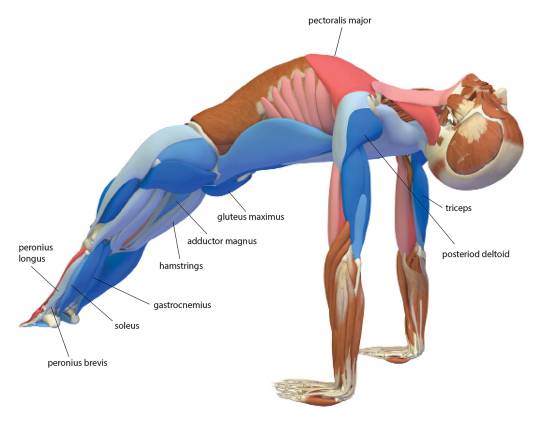
Plancha inversa Si eres el tipo de practicante de yoga que busca cada oportunidad para tomar un vinyasa, más poder para ti. Literalmente: fluir hacia y desde la posición característica de “flexión” de Chaturanga desarrolla la fuerza y la resistencia de la parte superior del cuerpo. Pero si no contrarresta esta acción de empuje con la cantidad adecuada de acción de tracción, puedes desarrollar desequilibrios musculares. Su pecho y hombros pueden volverse más tensos mientras que su espalda se debilita, lo que puede provocar lesiones.
3 principios básicos del éxito
Purvottanasana (postura de plancha invertida o plancha hacia arriba) puede ayudar a abordar ese desequilibrio. Mientras Chaturanga fortalece la parte delantera de su cuerpo, Upward Plank estira la parte delantera y fortalece la espalda.
Plancha inversa "Purvottan" significa "estiramiento intenso hacia el este" en sánscrito, y ciertamente sentirás el estiramiento en todo tu cuerpo mientras estás en esta postura. A medida que avanza hacia Purvottanasana, se activará a través de sus piernas, núcleo, hombros y brazos, aparentemente involucrando todos los músculos. La recompensa: estirará los músculos demasiado tensos de los hombros, el pecho y la parte delantera de los tobillos, mientras fortalece los brazos, las muñecas y las piernas. Plancha inversa
Plancha inversa Como todas las posturas de yoga, la alineación es clave en Reverse Plank y crea espacio en tu cuerpo. Respire en la expansividad. Y recuerde que si bien desea desarrollar fuerza en el yoga, la fuerza equilibrada es lo que le permite seguir practicando de manera segura durante los próximos años.
Purvottanasana
Conceptos básicos de Upward Plank
Sánscrito: Purvottanasana (PUR-voh-tun-AHS-uh-nuh)
purva = este
uttana = estiramiento intenso
Tipo de pose: Equilibrio del brazo
Objetivos: Cuerpo completo
Divisor de sección
Beneficios
Esta pose que aumenta la energía puede combatir la fatiga y ayudarlo a desarrollar confianza en usted mismo y en su práctica. Plancha inversa fortalece el tronco, los músculos del cuello, los muslos, los hombros y los brazos. También estira los hombros y el pecho, así como los lados de la palma de la muñeca (los flexores de la muñeca), lo que puede contrarrestar los efectos negativos de la escritura.
Otras ventajas de Reverse Plank:
Mejora la postura y contrarresta los efectos de estar sentado durante mucho tiempo.
Estira los bíceps y la parte delantera de los tobillos.
naturaleza del yoga Los 5 elementos más importantes
Pasos para realizar estiramientos de yoga y ejercicios corporales Plancha inversa
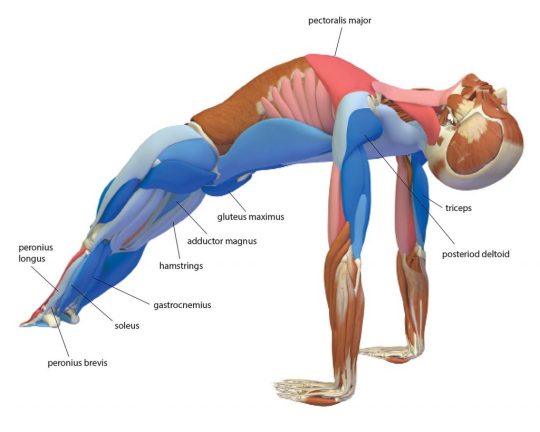
Postura de Purvottanasana
- Instrucciones paso a paso Plancha inversa
- Comience sentado en Dandasana (postura del bastón) con las piernas extendidas y las manos al lado de las caderas, las palmas hacia abajo con las yemas de
- los dedos apuntando hacia los talones.
- Junte los dedos gordos de los pies y deje un poco de espacio entre los talones.
- Flexiona los tobillos para llevar los dedos de los pies hacia las rodillas. Presione hacia adelante con los talones.
- Gire la parte interna de los muslos hacia abajo y reafirme los tobillos externos en la línea media.
- Inclínese ligeramente hacia atrás y deslice las manos hacia atrás unas 8 pulgadas.
- Mientras inhala, mueva los omóplatos hacia adentro y hacia arriba, levantando y abriendo el pecho desde atrás.
- Mientras exhala, estire hacia el piso con los montículos del dedo gordo del pie y levante las caderas.
- Presione contra la alfombra con los montículos del dedo gordo del pie. Continúe rotando la parte interna de los muslos hacia abajo mientras dirige la carne
- de las nalgas hacia la parte posterior de las rodillas.
- Presione hacia abajo con las manos para inflar el pecho y levante la columna torácica hacia el esternón y el esternón hacia el techo.
- Permita que su cabeza se incline ligeramente hacia atrás, asegurándose de que la curva de su cuello sea una continuación de la curva de la parte superior de
- la espalda.
- Aguanta de 5 a 10 respiraciones. Presione sus pies y manos mientras exhala; levante las caderas y el pecho mientras inhala.
- Aléjese de la postura mientras dobla las rodillas y los codos y desciende con cuidado al suelo.
Postura de Purvottanasana
- Consejos para principiantes
- Mantenga los hombros directamente por encima de las muñecas. Si no están alineados, ajuste la posición de sus pies.
- Si siente dolor en las muñecas, doble ligeramente los codos. Si el dolor persiste, sal de la postura.
- Presione los talones y las manos y levante el pecho para evitar hundirse en los hombros.
- Errores comunes Plancha inversa
- Para la mayoría de las personas, es mejor no dejar caer la cabeza hacia atrás en esta postura, especialmente si tiene una lesión en el cuello o está en riesgo de sufrir un derrame cerebral. En cambio, trate de mantener su cuello en línea con el resto de su columna vertebral.
- ¡Tener en cuenta!
- Evite o modifique si tiene artritis en la muñeca, dolor en la muñeca o síndrome del túnel carpiano. También debe evitar o modificar si tiene lesiones en el hombro (incluidas las lesiones del manguito rotador), un reemplazo de hombro o problemas en el cuello.
- No practique esta postura si padece una hernia.
- Si tiene presión arterial alta, no permita que su cabeza se incline hacia atrás
- Tenga cuidado o evite un compromiso central fuerte si está embarazada, especialmente en el segundo y tercer trimestre. Modifique a una versión más suave como Reverse Tabletop y manténgalo presionado por solo un par de respiraciones.
- Profundizar la pose
Presione sus pies y manos hacia abajo aún más firmemente en el suelo y levante las caderas y el pecho más alto.
Divisor de sección
Variaciones de la tabla inversa
Para modificar o profundizar la pose, pruebe una de estas variaciones.
Foto: Christopher Dougherty
Tablero de mesa inverso
Comience sentado en el suelo con las rodillas dobladas y los pies apoyados en la colchoneta. Presione sus manos en el tapete a unas 8 pulgadas detrás de usted, con las palmas hacia abajo con las yemas de los dedos apuntando hacia los talones. Empiece a levantar lentamente las caderas y presione el pecho hacia arriba.
Yoga para la relajación
Evite dejar caer la cabeza hacia atrás. En su lugar, mantenga el cuello en línea con el resto de la columna o meta un poco la barbilla. Quédese aquí por varias respiraciones. Suelta lentamente las caderas hacia abajo mientras llevas la barbilla hacia el pecho.
Foto: Christopher Dougherty
Postura de la tabla hacia arriba en una silla
Coloque una silla sobre el tapete o contra una pared. Siéntese en la silla con las rodillas dobladas. Lleva las manos al borde delantero de la silla con las yemas de los dedos hacia adelante y dobladas hacia abajo.
Aleje lentamente los pies de la silla. Levanta las caderas y presiona el pecho hacia arriba. Empuje hacia abajo en la silla para que no se resbale. Extienda las rodillas para estirar las piernas si le resulta cómodo. Quédese aquí por varias respiraciones. Doble las rodillas y camine lentamente con los pies hacia la silla.
Foto: Christopher Dougherty
Plancha hacia arriba con una cuña
Siéntese en Dandasana (postura del bastón). Coloque una cuña detrás de usted con el lado grueso de la cuña hacia usted. Lleva tus manos a la cuña de modo que tus dedos apunten en dirección opuesta al bajar por la pendiente.
Levanta tus caderas. Evite dejar caer la cabeza hacia atrás; en su lugar, mantenga el cuello en línea con el resto de la columna o meta un poco la barbilla. Mantenga durante varias respiraciones.
El yoga es bueno para la columna vertebral?
Divisor de sección

- Posturas preparatorias y de contraataque
- Asegúrese de dedicar tiempo a su práctica abriendo los hombros, los brazos y las muñecas antes de adoptar esta postura.
- Poses preparatorias
- Marjaryasana (postura del gato)
- Bitilasana (postura de la vaca)
- Postura de la tabla
- Humilde guerrero
- Postura de la tabla del delfín (tabla del antebrazo)
- Salabhasana (postura de la langosta)
- Setu Bandha Sarvangasana (postura del puente)
- Posturas de mostrador
- Ananda Balasana (Postura de bebé feliz)
- Ardha Matsyendrasana (Postura del medio señor de los peces)
- Paschimottanasana (inclinación hacia adelante sentado)
- Divisor de sección
Tu cuerpo en Reverse Plank | Anatomía
Purvottanasana es una flexión hacia atrás que es similar a Ustrasana (postura del camello) en la forma en que se involucran los hombros. Sin embargo, sus caderas se extienden menos en esta postura, que a su vez enfoca más el estiramiento en sus hombros, explica Ray Long, MD, cirujano ortopédico e instructor de yoga certificado por la junta.
Combina la extensión de la parte superior del cuerpo con un levantamiento de la pelvis para alargar la parte delantera del cuerpo y fortalecer toda la espalda.
En los dibujos a continuación, los músculos rosados se estiran y los músculos azules se contraen. El tono del color representa la fuerza del estiramiento y la fuerza de contracción. Más oscuro = más fuerte.
los deltoides posterior los músculos extienden los hombros hacia atrás y alejándolos del torso. Esto crea un estiramiento intenso de la porción anterior de los deltoides en tus hombros, el pectoral mayor en tu pecho, y el bíceps músculos de la parte superior de los brazos.
los tríceps extienda los codos y la parte posterior del deltoides extienda sus hombros, sinergizando para profundizar el estiramiento a través de su cuerpo delantero.
Tus rodillas están enderezadas por tu cuadríceps.
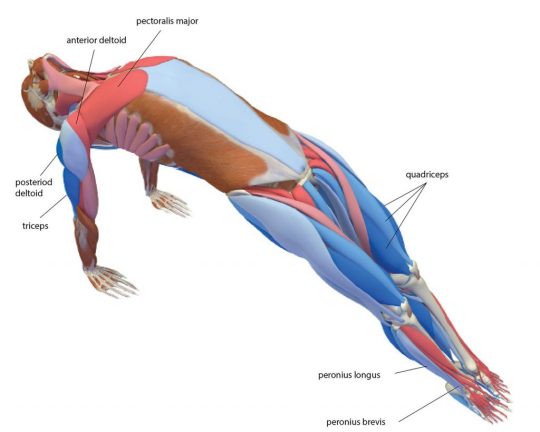
Tu espalda se arquea gracias al trabajo del erector de la columna a lo largo de la columna y el lumbar cuadrado en la espalda baja. Activar el glúteo mayor en los glúteos para empujar la pelvis hacia arriba y hacia afuera, acentuando el arco de la espalda.
Sus caderas se enderezan aún más por el aductor músculos a lo largo de la parte interna del muslo, especialmente la aductor mayor. Purvottanasana estira el músculos flexores en la parte delantera de las caderas, incluida la psoas.
Cuando activa los isquiotibiales, esta acción presiona los pies contra la colchoneta y provoca una fuerza ascendente que sinergiza la elevación de la pelvis. los peroneo largo y brevis Los músculos a lo largo de la parte posterior y lateral de cada pantorrilla ayudan a presionar las puntas de los pies contra la colchoneta.
Sus pies se estiran y se curvan hacia abajo mediante la activación del gastrocnemio y sóleo músculos. Esto requiere algo de longitud en los músculos de la parte delantera de la parte inferior de las piernas. Poses como Virasana (Pose de héroe) pueden ayudar a estirar aquellas antes de entrar en Purvottanasana.
Extraído y adaptado con permiso de Las posturas clave del yoga y por Ray Long.

Divisor de sección
Ponga en práctica Reverse Plank
Aquí hay algunas secuencias para probar esa función Upward Plank.
Sobre nuestros colaboradores
Maestra y modelo Natasha Rizopoulos es maestra senior en Down Under Yoga en Boston, donde ofrece clases y dirige capacitaciones para maestros de 200 y 300 horas. Una dedicada practicante de Ashtanga durante muchos años, quedó igualmente cautivada por la precisión del sistema Iyengar.
Máquina de remo – Resuélvalo
Estas dos tradiciones informan su enseñanza y su sistema de vinyasa dinámico basado en la anatomía Align Your Flow. Para obtener más información, visite natasharizopoulos.com.
Ray Long es cirujano ortopédico y fundador de Bandha Yoga, una popular serie de libros de anatomía del yoga, y el Daily Bandha, que brinda consejos y técnicas para enseñar y practicar la alineación segura.
Yoga: un elixir para el cuerpo y la mente
Ray se graduó de la Facultad de Medicina de la Universidad de Michigan y realizó una formación de posgrado en la Universidad de Cornell, la Universidad de McGill, la Universidad de Montreal y el Instituto Ortopédico de Florida. Ha estudiado hatha yoga durante más de 20 años, se ha entrenado extensamente con BKS Iyengar y otros maestros de yoga líderes, e imparte talleres de anatomía en estudios de yoga de todo el país.
5 consejos para mantenerse en forma
3 principios básicos del éxito
4 actividades para mantenerse saludable
Las cinco mejores posturas de yoga te ayudan a combatir la obesidad
Los 5 mejores DVD de yoga para hombres
3 consejos principales para bajar de peso comiendo ensaladas
Read the full article
0 notes
Photo

(via Total Body Yoga Workout | Wall Flow | 30 Minute Vinyasa: Great for improving postures and for getting deeper into advanced asanas. In this wall yoga class, Sami… || Curated with love by yogadaily)
#purvottanasana#yoga#yogi#yogini#yogainspo#yoga pose#yoga poses#asana#asanas#yoga motivation#yoga inspiration#manifestation#manifest#manifesting#fitness#health & fitness#wellness
29 notes
·
View notes
Text
Crab the Reverse Tabletop or Half Upward Plank
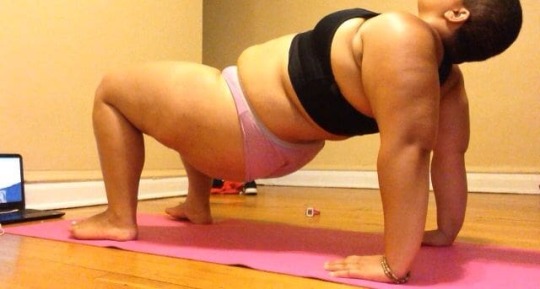
Crab the Reverse Tabletop or Half Upward Plank
The Reverse Tabletop or Half Upward Plank or Crab pose is an effective and low-impact exercise for core and arm strength, as well as overall body coordination. Its movements work the midsection and arm stability simultaneously. It is recommended for beginners to learn proper form and create increased muscle memory and is a useful tool for those striving to improve their posture. The exercise’s low-impact motions help to avoid injury and build joint strength, making it a great addition to both a strength-building and conditioning routine.
Post Category: Yoga Asanas | Yoga Reclining Poses
Post Tags: Abdominal | Ardha | Calisthenics | Core | Half | Plank | Planking | Purvottanasana | Reverse | Tabletop | Upward
Do you have any yoga pose photo to share? We'd love to hear from you. Submit your images to us via Whatsapp or other social media networks
Shop NuLEMON Direct
Read the full article
0 notes
Video
Day 22 #purvottanasana #yoginspiration #calisthenics #workout #ashtanga #yogaeverywhere #doyoufeelstrong #yogiseeyogido #coreconditioning https://www.instagram.com/p/B27Hs7wDK5z/?igshid=q1ftmjf20k8e
#purvottanasana#yoginspiration#calisthenics#workout#ashtanga#yogaeverywhere#doyoufeelstrong#yogiseeyogido#coreconditioning
1 note
·
View note
Photo
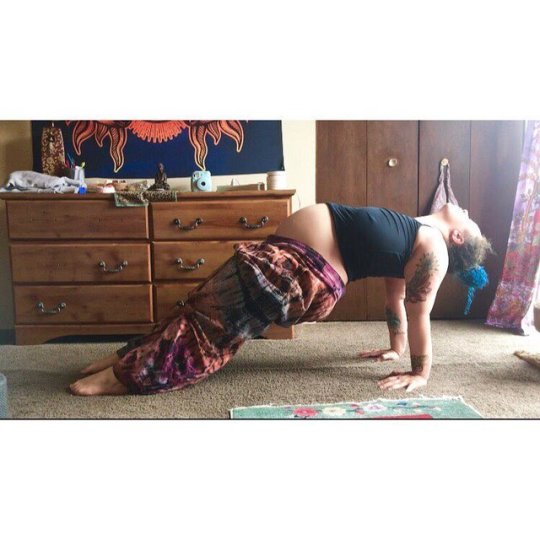
i am filled with gratitude every moment of every day that the Universe has had my back on so many levels. i’m putting in the work to affirm the things i want or would like grow upon in this life, and right now i am in such a smooth, beautiful chapter. i hope this can build me so that when any loss or sadness arises again - i can navigate it even more consciously than before. i am working everyday towards one thing: loving awareness/loving compassion/loving gratitude towards myself and every other living being around me. it’s hard work. every single day. and i acknowledge the human in me that fails, and the divine in me that rises every time. 🦋 i hope you all can move forward with peace and love and kindness today. if you live it truthfully, your light will shine. 🦋🕉🦋 ✨ ✨ #spiritualpath #yoga #prenatalyoga #pregnantyoga #gratitude #compassion #mindfulmovement #lovingawareness #divinefeminine #divine #human #love #purvottanasana #18weekspregnant https://www.instagram.com/p/Bwrm5JUFpwi/?utm_source=ig_tumblr_share&igshid=1m4pzvo8nfuep
#spiritualpath#yoga#prenatalyoga#pregnantyoga#gratitude#compassion#mindfulmovement#lovingawareness#divinefeminine#divine#human#love#purvottanasana#18weekspregnant
1 note
·
View note
Photo
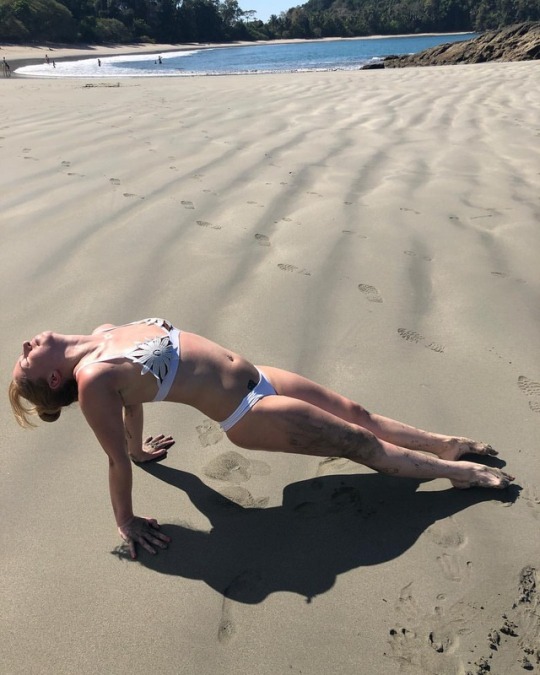
Day 3 of #legsformiles with @cyogalife is #plank up or #purvottanasana ...still playing catch up... #yoga #yogaeverydamnday #yogagirl #yogalove #yogapractice #yogalife #yogaeverywhere #yogi #yogini #yogisofinstagram #yogilife #yogilove #igyoga #yogainspiration #instayoga #asana #namaste #practiceandalliscoming #loveandalliscoming #practiceyogachangetheworld (at Manuel Antonio National Park) https://www.instagram.com/p/BvDD-4FFNAQ/?utm_source=ig_tumblr_share&igshid=10uta5r28383c
#legsformiles#plank#purvottanasana#yoga#yogaeverydamnday#yogagirl#yogalove#yogapractice#yogalife#yogaeverywhere#yogi#yogini#yogisofinstagram#yogilife#yogilove#igyoga#yogainspiration#instayoga#asana#namaste#practiceandalliscoming#loveandalliscoming#practiceyogachangetheworld
1 note
·
View note
Photo

#purvottanasana = Intense-Stretch-of-front-of-body 🙌🏻 Ancient yogis were practicing this pose with the anterior part of the body facing the rising sun, towards the East, symbol of new beginnings. Purvottanasana conjures up the possibilities that each new day bring as the sun rises. ☀️ : strengthen wrists, shoulders, ankles,upper back, legs and butt. 🍑 #yogaeverydamnday #yogalife #yogi #yogaeverywhere #asana #yogilove #aloyoga #yogamen #yoga #kramavinyasa #lululemon #yogapractice #lululemonmen #wanderlust #alomoves #yogawisdom #yogafit #yogisofinstagram #yogainspiration #yogadudes #boysofyoga #yogasydney #yogaaustralia #sydneyyogateacher #yogajournalaustralia #yogaretreat #yogawitharian
#purvottanasana#yogaeverydamnday#yogalife#yogi#yogaeverywhere#asana#yogilove#aloyoga#yogamen#yoga#kramavinyasa#lululemon#yogapractice#lululemonmen#wanderlust#alomoves#yogawisdom#yogafit#yogisofinstagram#yogainspiration#yogadudes#boysofyoga#yogasydney#yogaaustralia#sydneyyogateacher#yogajournalaustralia#yogaretreat#yogawitharian
13 notes
·
View notes